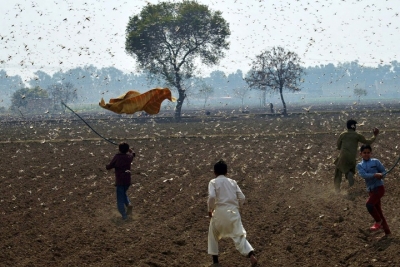
The current attack began in January 2019. According to the Food and Agriculture Organisation (FAO) of the United Nations, which monitors and manages locust invasions, between February and June, widespread breeding in Yemen, Saudi Arabia and Iran caused the formation of large numbers of locust swarms. (These areas reported heavy rains in January.)
Control operations were less successful in Iran and Yemen and swarms invaded the India-Pakistan border between June and December. In India, the monsoon provided a favourable environment for the locusts to multiply. The outbreak began late last year in Gujarat and Rajasthan, where more than 3.5 lakh hectares of crop were affected in various districts. Crops of mustard, cumin and wheat were damaged. But a number of timely measures such as spraying of insecticides and a change in wind direction prevented the spread and larger damage. However, some farmers have lost their entire crops and may need replanting.
Picture Credit : Google

